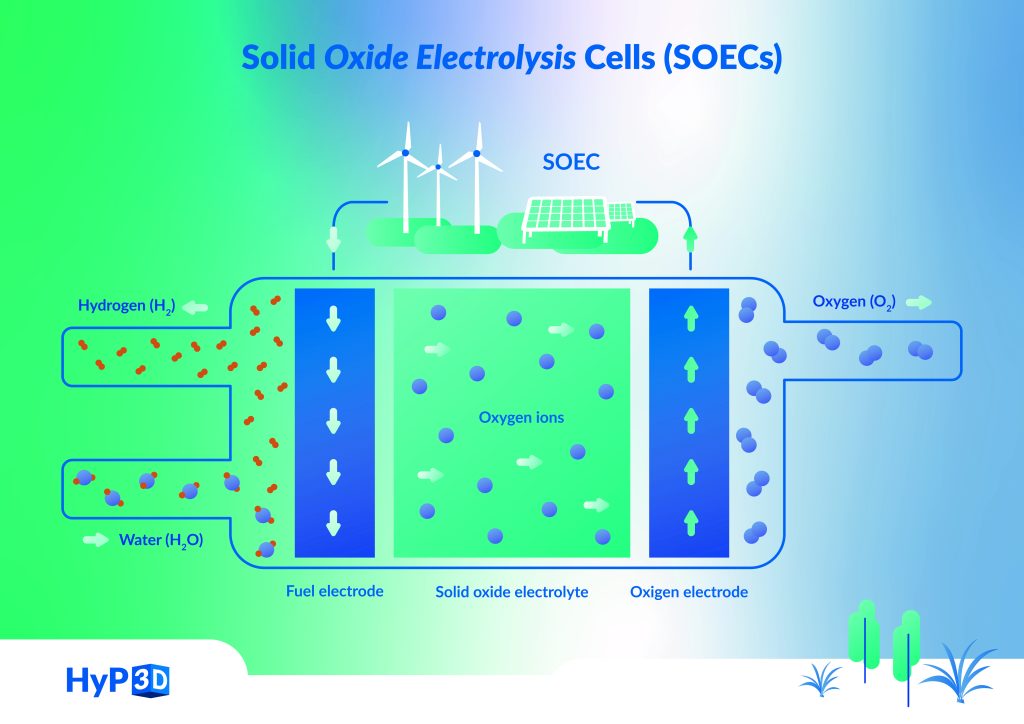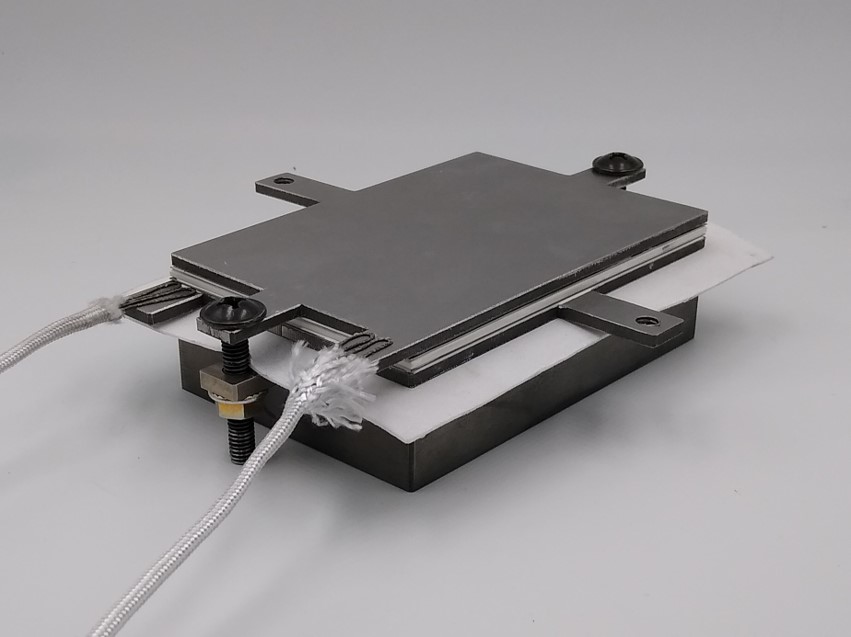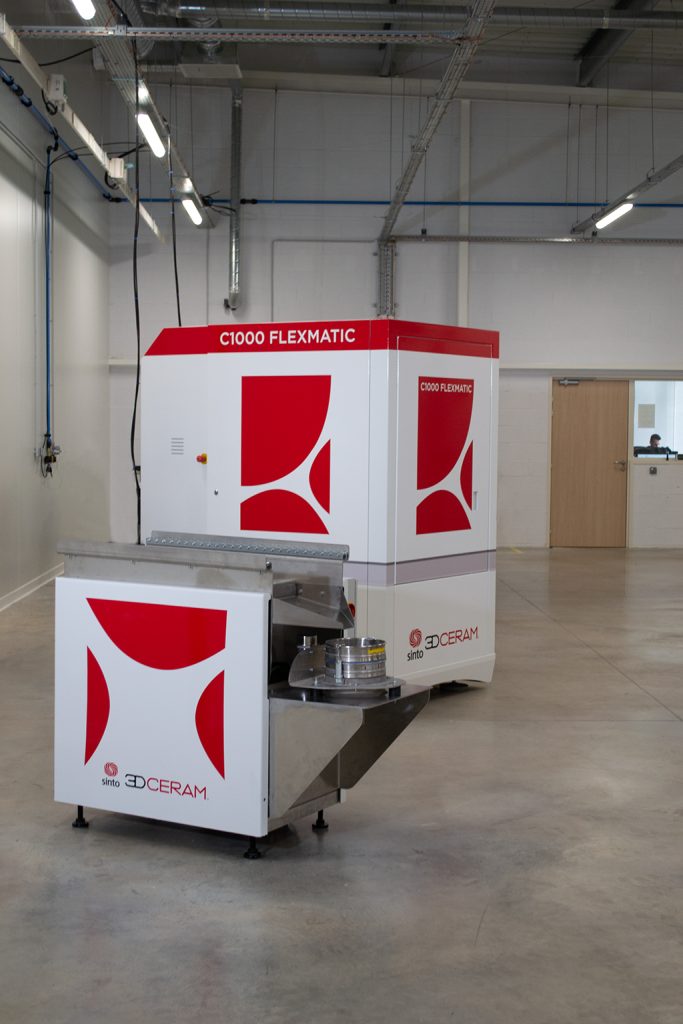Time is running out! Nominate now for the 3D Printing Industry Awards 2023.
The HyP3D project has announced a breakthrough in the production of high-pressure hydrogen using 3D printing technology.
This Horizon Europe-funded project, which includes collaboration from French 3D printing OEM and service bureau 3DCeram, aims to showcase the viability of disruptive high-pressure Solid Oxide Electrolysis Cell (SOEC) technology.
HyP3D is combining this technology with advanced ceramics 3D printing to enable efficient and sustainable production of high-pressure hydrogen.
“With this groundbreaking HyP3D initiative, the energy sector witnesses a convergence of 3D printing prowess and hydrogen innovation, propelling the world towards a more sustainable energy future,” Ceram3D stated in a press release.

High-pressure hydrogen production using 3D printing
Central to the HyP3D project is the creation of compact, high-pressure standalone SOEC stacks that can convert electricity into compressed hydrogen. HyP3D aims to utilize 3D printed SOEC cells to achieve this.
These cells possess a large active area of 70 cm2, embedded functionalities, and the capacity to produce hydrogen at high densities exceeding 0.90A/cm2 (~1.3V) under conditions of 850°C and 5+ bar pressure.
This novel additive manufacturing methodology is said to present a “paradigm shift” away from traditional ceramics SOEC processing. The 3D printed ultra-high power density SOEC stacks reportedly offer a 2.14kW power output within a compact 630 cm3 volume. This translates to a threefold rise in specific power per unit volume to 3.4kW/, and a fourfold increase in specific power per unit mass to 1.10 kW/kg. These capabilities are said to exceed any existing benchmarks.

HyP3D: a collaborative effort
3DCerams’s role within HyP3D’s work plan and methodology spans 3D printable feedstock, 3D printing parameters, and thermal treatments.
Notably, 3DCeram has used commercially available YSZ powders to formulate specialized slurries for SLA 3D printing. The team is now exploring rheological behavior and conducting 3D printing tests. What’s more, the company is working to design optimal 3D printing procedures, and aims to produce complex-shaped parts that mirror the final cell dimensions.
3DCeram will leverage the C1000 Flexmatic, its latest semi-automatic ceramic 3D printer, to achieve these goals. Possessing a 320 x 320 mm build platform and two lasers, the C1000 is billed as being ideal for industrial customers with mass 3D printing aims. The C1000 also incorporates a material recycling station, boosting automation and reducing waste.
“The industrialization possibilities offered by the C1000 FLEXMATIC are essential for the successful completion of the project,” 3DCeram claims.
3DCeram is also working alongside IREC, the Catalonia Institute for Energy Research, to formulate optimal 3D printing strategies to ensure reliability and maximize production yield. This aligns with broader efforts to advance the hydrogen economy, reduce time-to-market, cut raw material consumption by 76%, and minimize the initial investment by 42% compared to conventional manufacturing processes.
Hydrogen production system specialists H2B2 are also collaborating as part of the HyP3D project. The Sevilla-based company is said to be “elevating the project’s success” thanks to its energy efficiency expertise. Indeed, the company’s ownership of the manufacturing pilot line reportedly streamlines the production of HyP3D cells.

Developments in ceramic 3D printing
This is not the first time 3DCeram has been called upon for its ceramic 3D printing expertise. Earlier this year, the company was selected to be an official supplier for French space propulsion manufacturer ThurstMe.
Through this partnership, ThrustMe aims to exploit the potential of 3D printed ceramics in aerospace applications. The company claims that, thanks to its high-performance material properties, ceramics offer a more compact, efficient, and reliable solution over traditional materials.
“Some of our components are exposed to high temperatures in a chemically active plasma environment, requiring a material with exceptional heat and chemical resistance,” explained Elena Zorzolli Rossi, ThrustMe’s Product Manager. “Ceramics emerged as the most suitable option in this regard, with its remarkable thermal and chemical stability.
Elsewhere, it was announced last year that Cornell University, alongside start-up Dimensional Energy and Austrian Ceramic 3D printing company Lithoz, had been awarded a grant to develop novel ceramics that could be used to 3D print clean energy reactor parts.
After raising $50,000 in funding, researchers at the firms worked to develop a novel ceramic that can handle the high temperatures of thermocatalytic reactors in operation. Utilizing 3D printing and computer modeling, the team claimed that it could be possible to layer this material into structures, shaped specifically to improve resilience and reactor CO2 conversion rates.
Subscribe to the 3D Printing Industry newsletter to keep up to date with the latest 3D printing news. You can also follow us on Twitter, like our Facebook page, and subscribe to the 3D Printing Industry Youtube channel to access more exclusive content.
Are you interested in working in the additive manufacturing industry? Visit 3D Printing Jobs to view a selection of available roles and kickstart your career.
Featured image shows a 3D printed SOEC cell. Photo via HyP3D.


